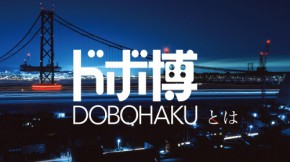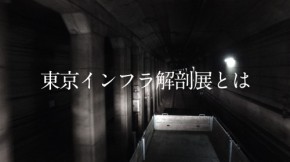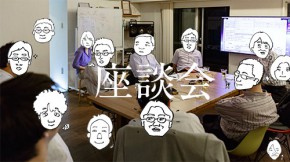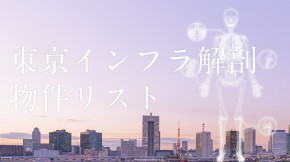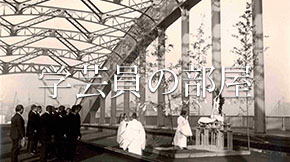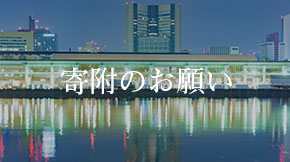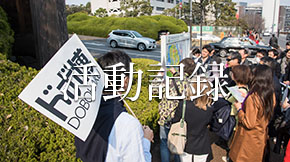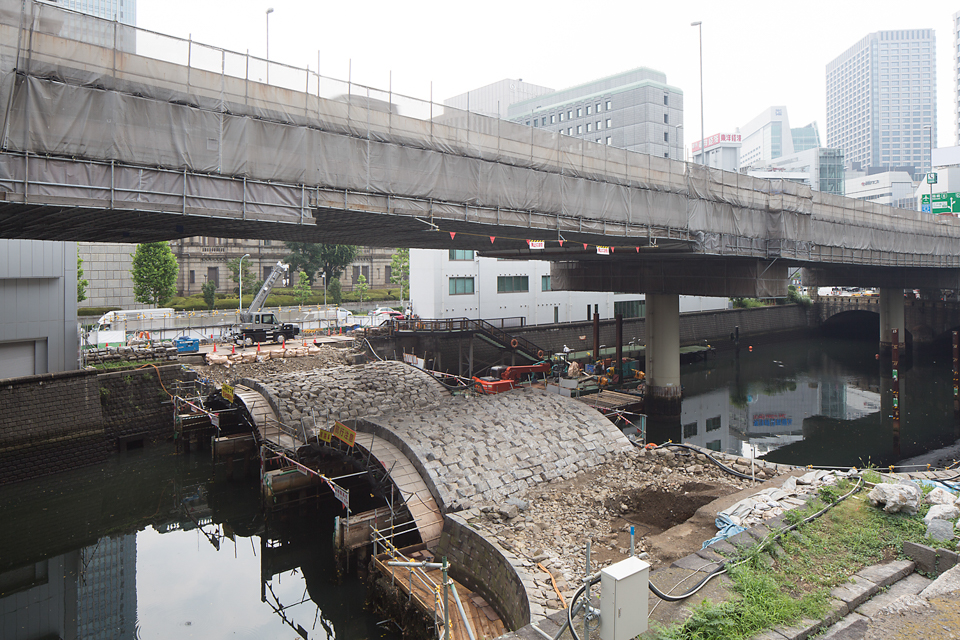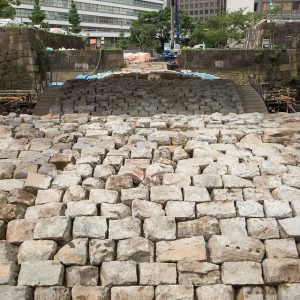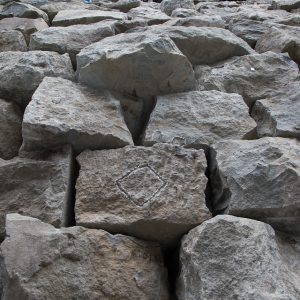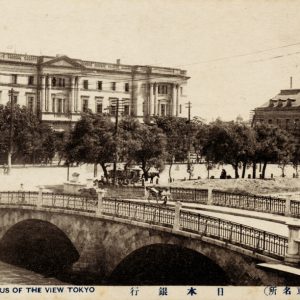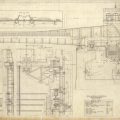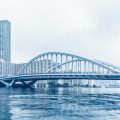At the beginning of the Meiji era, the main players in urban modernization were foreign engineers, employed by the government. They brought modern infrastructure that Japanese have never seen before, such as railroads, modern water supply / sewer system, brick structures, etc.
Meanwhile, there were also modern facilities handled by Japanese. For example, the stone bridge built by masons from the Kyushu region was new and modern for Tokyoite who were used to the timber bridge. In Tokyo, more than 10 stone bridges were built in the early Meiji era. These were often portrayed in woodcuts as a symbol of civilization like railway landscapes.
It may be interesting to know that these bridge materials were part of old fortress of Edo Castle. This means that the civil structures to strengthen the modern Tokyo open network was realized to the detriment of closed urban structure. The abolition of the barriers across the country was at the same time.
Thus, the stone bridge in the beginning of the Meiji period shows symbolically the transition from Edo to Tokyo, but today only the Tokiwa-bashi bridge remains. Others were replaced by metal or concrete bridges from the end of the 19th century.
Today, Tokiwakabashi bridge, which suffered serious damage due to the Great East Japan Earthquake of 2011, is being repaired extensively. While disassembling the stones carefully, confirming traditional wisdom, they are trying to restore the powerful and symbolic structure. (D.Kitagawa)
| Type | Road bridge |
| Location | Chiyoda-ku/Tokyo |
| Structure | Stone arch bridge |
| Scale | bridge length 32.8 m |
| Completion year | 1877 |
| Manager | Chiyoda Ward |
| Remarks | National Historical Site |
